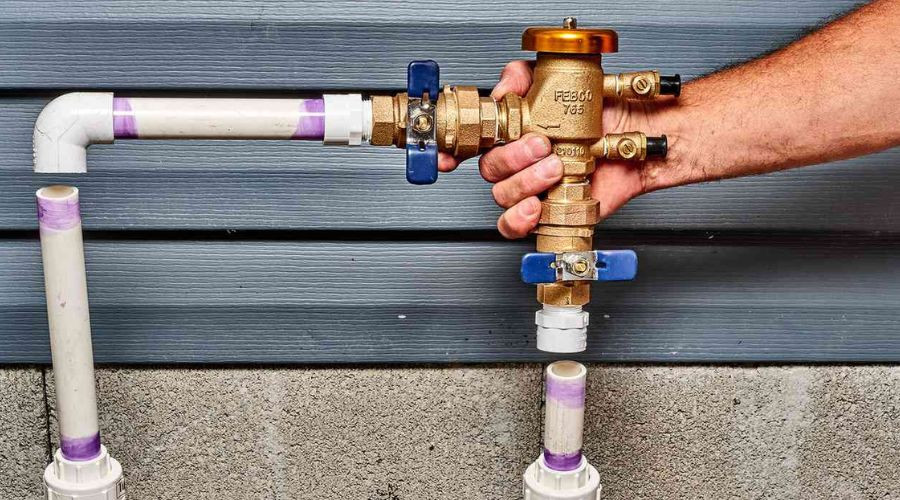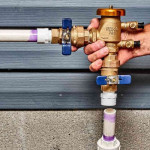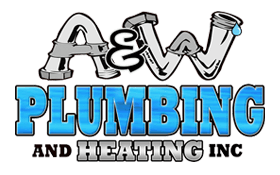What Is Backflow?
Clean water is necessary for public health. After centuries of refinement, most societies enjoy high public health due to the ubiquity of clean water and high-functioning distribution systems. To keep treated water clean to the tap, a sophisticated system of codes and devices prevents contamination, keeping the water safe for human consumption.
One source of contamination that has caused trouble over the years is backflow. Backflow is the undesirable reversal of water flow or other substances within a plumbing system. It occurs when the normal direction of water flow is reversed, allowing contaminated or non-potable water to enter the clean water supply. If not properly prevented and controlled, backflow can pose serious health risks and contamination hazards. Luckily, the codes and devices implemented over the years allow for the depreciation of backflow events.
How Is Backflow Dangerous?
 Water in pipes ready for use is protected only because it was treated at the treatment facility and then introduced into the sterile piping. If the sterility of the piping is compromised at any point, the water will be contaminated. Backflow events happen when large pressure changes occur in a plumbing system. For example, suppose a high-pressure distribution line burst. The change in pressure can allow pipes further downstream to pull a vacuum and start to siphon nearby groundwater or chemicals, contaminating the treated water in the line.
Water in pipes ready for use is protected only because it was treated at the treatment facility and then introduced into the sterile piping. If the sterility of the piping is compromised at any point, the water will be contaminated. Backflow events happen when large pressure changes occur in a plumbing system. For example, suppose a high-pressure distribution line burst. The change in pressure can allow pipes further downstream to pull a vacuum and start to siphon nearby groundwater or chemicals, contaminating the treated water in the line.
Documented backflow events in the past have allowed a variety of harmful contaminants into water lines. Some instances of backflow have involved things like:
- Human waste
- Biohazardous materials
- Dangerous chemicals
- Groundwater
- Fertilizers
Unfortunately, when backflow occurs, the only remediation is purging the water lines until the contamination is gone. In some cases, this means purging an entire city’s worth of pipes with millions of gallons of water to remove the harmful chemicals.
What Is the Backflow Testing Process?
 Backflow is largely a problem for large commercial water customers and the water distribution system. Backflow can happen around the home, but the methods for preventing contamination are different due to the different needs of residential customers. In many cases, the only method for preventing backflow is with backflow prevention devices. These devices are mechanical and use slight changes in pressure to sense backflow and stop the back-siphoning. The plumber must test and certify these devices according to local plumbing codes to ensure they operate properly.
Backflow is largely a problem for large commercial water customers and the water distribution system. Backflow can happen around the home, but the methods for preventing contamination are different due to the different needs of residential customers. In many cases, the only method for preventing backflow is with backflow prevention devices. These devices are mechanical and use slight changes in pressure to sense backflow and stop the back-siphoning. The plumber must test and certify these devices according to local plumbing codes to ensure they operate properly.
How Often Do Backflow Devices Need To Be Tested?
Backflow testing is essential to ensuring municipal water services are safe and commercial customers aren’t contaminating drinking water with harmful byproducts. Backflow prevention devices must be tested and certified by a professional every year to protect public health and ensure that water supplies stay safe. Business owners can do their part by inspecting their backflow prevention devices annually. Homeowners can do their part by using licensed plumbers to work on plumbing. If they know of backflow devices on their property, they should also adhere to local plumbing regulations.
About A & W Plumbing and Heating, Inc.
Call the pros at A & W Plumbing and Heating, Inc. for backflow testing and certification. They promise same-day service in most cases and fast turnarounds on every project. Call today for plumbing service in Murphysboro, IL.



